 The Journal
of the British Astronomical Association
The Journal
of the British Astronomical Association
Volume 120, No.3: 2010 June
 Summary
contents page
Summary
contents page
Detailed contents: Notes and News / Articles / Observers' Forum /
Reviews / Letters / Meetings / BAA Update


Cover image
IC 5067, the ‘Pelican’, a huge diffuse HII emission nebula and
star-forming region in Cygnus, imaged by Gordon Rogers in 2005 July. 30
minutes of RGB exposures and 120 minutes of H-alpha taken with an ST10
CCD on a Takahashi FSQ riding on a 16" RCOS, mounted on a Paramount ME.
Look out for noctilucent clouds this summer (Ken Kennedy) /
From the President (David Boyd ) / Solar Section (Lyn Smith)
/ A new Director for the Historical Section (Mike Frost) / The
Isle of Man on the ISS (Nick James) / Supernova news (Stewart
L. Moore & Guy M. Hurst) / Radio Astronomy group (John Cook)
/ Johannes Kepler in Prague - and a new museum (Richard McKim) /
Robotic telescope observing with the BAA (Peter Meadows)
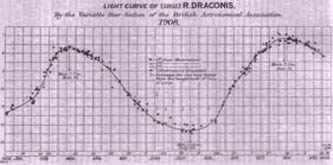
British variable star associations, 1848-1908 ... John Toone
The study of variable stars lagged some
distance behind solar system, positional (double star) and deep sky
research until the middle part of the 19th century. Then, following F.
W. A. Argelander’s pioneering work in the 1840s, there was a striking
increase in variable star research, particularly in Europe. The
transformation was to such an extent that in the second half of the
19th century there were three attempts at forming variable star
associations within Great Britain. The first in 1863 was the ASOVS,
which never got off the ground. The second in 1883 was the LAS VSS,
which was successfully launched but had somewhat limited achievements.
The third launched in 1890 was the BAA VSS which was eventually both a
resounding and lasting success. This paper is an outline history of
these three associations up to a position of one hundred years ago
(1908).
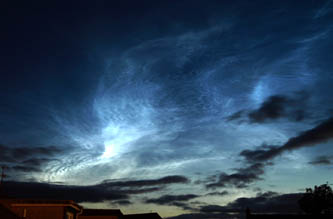
Noctilucent cloud over Britain and Western
Europe, 2006-2008 ... Ken Kennedy
Sightings of noctilucent clouds (NLC)
continued to increase during the period 2006-2008. A remarkable total
of 608 sightings was received in 2006, with 349 in 2007 and 362 in
2008. The difference in reported sightings between 2006 and 2007 and
2008 may be accounted for by good weather conditions in 2006 and
adverse conditions in both 2007 and 2008.
Variable star photometry with a DSLR camera ...
Des Loughney
In recent years it has been found that a
digital single lens reflex (DSLR) camera is capable of accurate
unfiltered photometry as well as V-filter photometry. Undriven cameras,
with appropriate quality lenses, can do photometry down to magnitude
10. Driven cameras, using exposures of up to 30 seconds, can allow
photometry to mag 12.
Anatomy of an illusion: the ‘Alhazen’ of Johann
Hieronymus Schröter ... Nigel Longshaw
Late in the 18th century, German
magistrate-astronomer J. H. Schröter charted what he took to be a
prominent crater on the eastern ‘shoreline’ of the Mare Crisium.
Subsequent observers experienced some difficulties in recovering the
feature, leading to a presumption of change which still hung over the
matter at the dawn of the space age. The observational history of this
episode and the controversy it engendered is discussed, and comparisons
made with the visual appearance of the isolated mountain peak Alhazen
Alpha in a small aperture telescope.
The 2009 outburst of V630 Cassiopeiae ...
Jeremy Shears & Gary Poyner
We present observations and analysis of the
2009 outburst of the unusual dwarf nova V630 Cas, which was only the
third recorded outburst of this star. The outburst lasted about 104
days, with the rise to maximum being slightly slower than the decline,
which we interpret as an inside-out outburst. At its brightest it had
V= 14.0, 2.3 magnitudes above the mean quiescence magnitude. The
characteristics of the outburst are similar to those of several other
long-orbital-period dwarf novae.
Click here to obtain a PDF file of
any of these articles
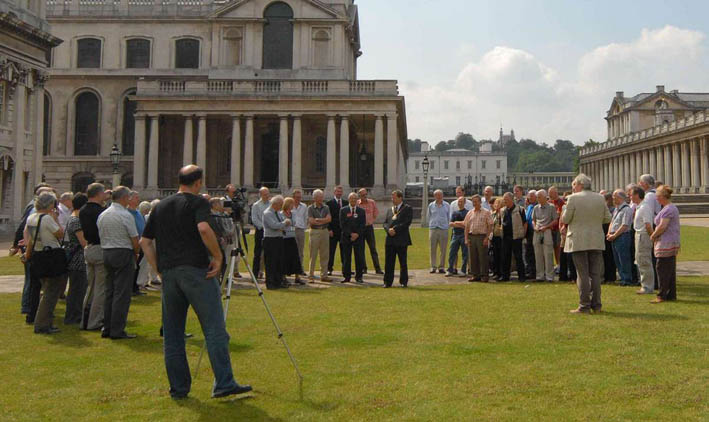
- Ordinary
Meeting, 2009 May 27, held at
the Royal Astronomical Society, Burlington House, Piccadilly, London W1
... Dominic Ford
- Exhibition
Meeting and Ordinary Meeting, 2009 June 27,
held at the Old Royal Naval College, Greenwich, London SE10 ...
Richard Miles
[Right: The Mayor
of Greenwich, Cllr Allan MacCarthy, opens
the 2009 Exhibition Meeting. Photo: Bob Marriott]
Why not join us at a BAA meeting near you? Meetings are open to
all and you will be made very welcome. Click here for the
latest
Meetings Diary
BAA Update
Obituary: Arthur Frank Edwards, 1918-2009 ... R. A. Marriott
Neil McIntyre Bone, 1959-2009 ... John W. Mason
The only naked-eye asteroid?
... John C. Vetterlein
Observing Saturn this
apparition: a note to
observers ... Alan
W. Heath & Paul Abel
The South Polar archive of
Harold Hill ... Bill Leatherbarrow
A Venus green flash ... Richard Baum
Captain Ainslie's jack-knife
refractor ... Len Clucas
Reviews

 A
question and answer guide to astronomy by Pierre-Yves
Bely, Carol Christian & Jean-René Roy
A
question and answer guide to astronomy by Pierre-Yves
Bely, Carol Christian & Jean-René Roy
Cambridge University Press, 2010. ISBN 978-0-521-18066-5. Pp xiv+280,
£18.19 (pbk).
 Reviewed
by Bob Mizon
Reviewed
by Bob Mizon
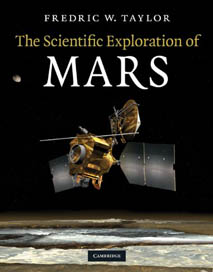

The scientific exploration of Mars by Fredric W. Taylor
Cambridge University Press, 2010. ISBN 978-0-521-82956-4. pp xiii+348,
£30.00 (hbk).
 Reviewed
by Bill
Leatherbarrow
Reviewed
by Bill
Leatherbarrow
CLICK HERE to read scores more
authoritative book reviews from the BAA Journal
Search for all your leisure needs at 

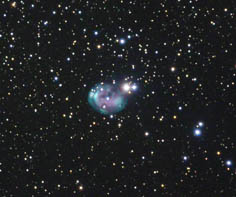

NGC 7008 – a ‘celestial hook’
... Stewart L. Moore
Image by Andrea Tasselli with an Intes Micro M809 (20cm f/10
Mak-Cass) and SXV-H9 CCD.
 Sky
notes for 2010 June & July by Callum Potter
Sky
notes for 2010 June & July by Callum Potter
Back to top of page
 Go
to the BAA Journal
home page
Go
to the BAA Journal
home page
 The Journal
of the British Astronomical Association
The Journal
of the British Astronomical Association The Journal
of the British Astronomical Association
The Journal
of the British Astronomical Association

 Notes and News
Notes and News 


 Meetings
Meetings Letters
Letters
 Reviewed
by Bob Mizon
Reviewed
by Bob Mizon

 Reviewed
by Bill
Leatherbarrow
Reviewed
by Bill
Leatherbarrow



 Observers'
Forum
Observers'
Forum Sky
notes for 2010 June & July by Callum Potter
Sky
notes for 2010 June & July by Callum Potter